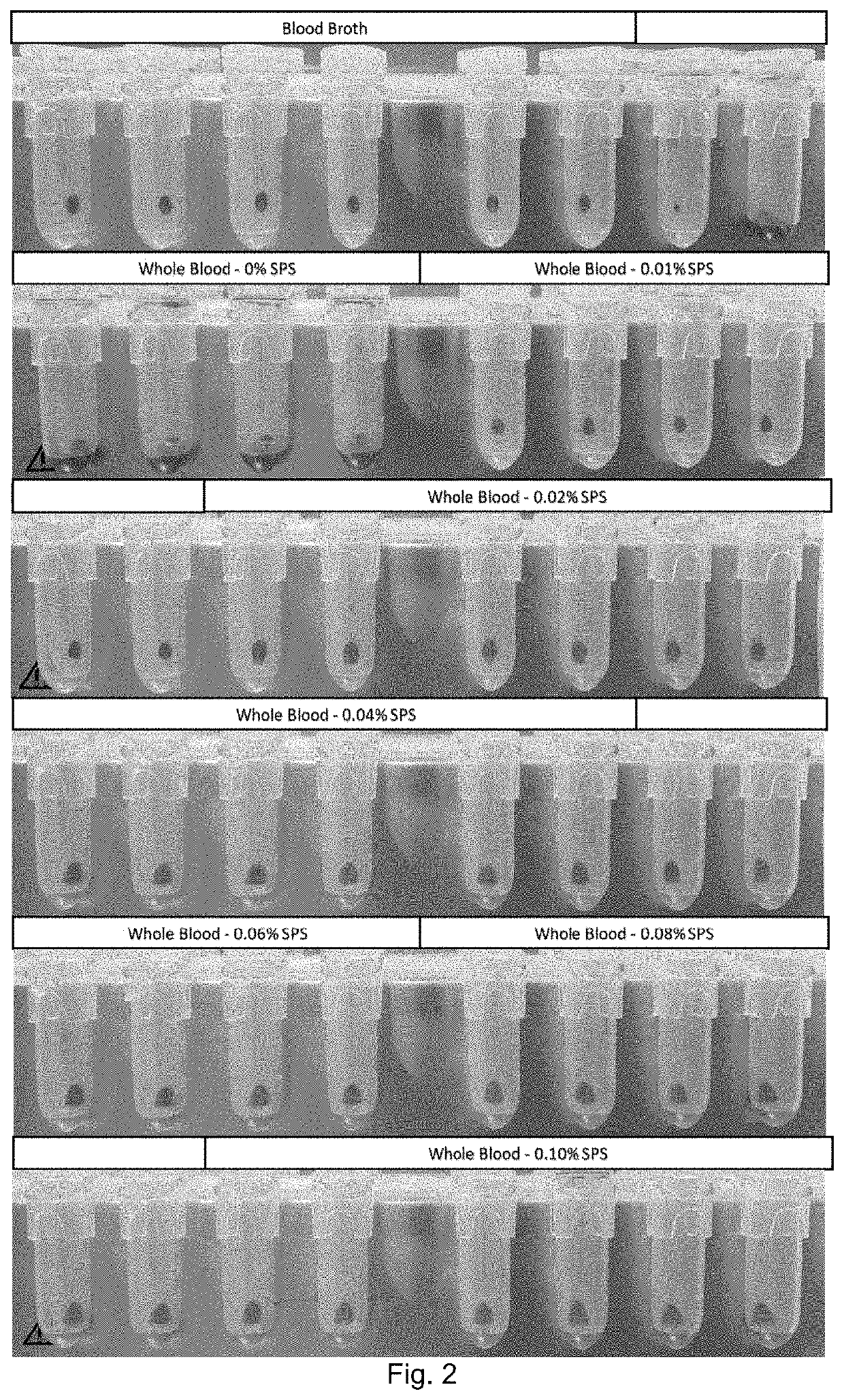Microorganism separation and detection
a technology for microorganisms and detection, applied in the field of microorganism separation and detection, can solve the problems of etga assay not being able to distinguish the activity of host microorganisms from dead microorganisms, the technique takes several days to complete, and the presence of contaminating polymerase activity outside the microorganisms
- Summary
- Abstract
- Description
- Claims
- Application Information
AI Technical Summary
Benefits of technology
Problems solved by technology
Method used
Image
Examples
example 1
[0348]In a manual format, two bead types (Merck Bio-Estapor (streptavidin-conjugated) 300 nm beads (Product—BE-M08 / 03; “Bio-Estapor”) and ademtech Bio-Adembeads Streptavidin Plus 200 nm beads (Product number 03222; “Bio-Ademtech”)) were compared to ApoH Technologies Peps6 beads (Reference—MP20006; “ApoH Peps6”).
[0349]In experiment 1A, an aliquot of Bio-Estapor beads (25 μL) and an aliquot of ApoH Pep6 beads (10 uL) were compared for binding. The higher volume of Bio-Estapor reflected the lower number of beads per mL in the material provided compared to the ApoH material. Three organisms were tested: E. coli (Gram negative bacterium), S. epidermidis (Gram positive bacterium) and C. albicans (yeast). 0.5 mL of organism suspension was exposed to the beads in 0.5 mL “TTGB” microbial binding buffer, provided in the ApoH Peps6 kit (“Peps6 Captobac”, Reference MP10031-50T).
[0350]After allowing the organism to bind for 30 min, the sample of beads was separated from the liquid supernatant by...
example 2
[0353]In Experiment 2, ApoH Peps6, Bio-Estapor and Estapor beads with a carboxylated surface (Product MI-030 / 40; “Estapor COOH”) were compared. The number of organisms remaining in the supernatant after binding of E. coli to the beads for 30 min was measured using a fluorescent ATP assay (BacTiter-Glo Microbial Cell Viability Assay; Promega Corporation, G8230). Although this is an indirect test in that it does not directly detect the presence of organisms on the bead, it is a useful comparative test for the ligand-based beads (ApoH Peps6) and the non-ligand beads of the invention (Bio-Estapor and Estapor COOH). After binding of 1 mL of 104 CFU / mL E coli for 30 mL from a phosphate saline buffer, an aliquot of the supernatant was assayed for ATP as a measure of organism content using the BacTiter-Glo assay. The results in Table 2 show that the reduction in levels of organisms in the supernatant for Peps6 beads, Bio-Estapor and Estapor COOH were 33%, 27% and 24% respectively when measu...
example 3
[0354]Example 3 shows results from testing E. coli (EC), S. aureus (SA) and C. albicans (CA) in dilution series performed by automating the method for magnetic separation described in Example 1. The assay used Bio-Estapor 300 nm diameter beads as the capture medium with a binding buffer of TTGB containing 0.25% Tergitol. As 10-fold dilutions of each of the three organisms were made, so a continuous change in the Ct was recorded allowing a dose response curve to be constructed.
TABLE 3Bugs: EC, SA, CAETGA threshold 4.338IPC threshold 0.911ETGA ETGA GrNegGrPosCandidaConfirm SampleTVCsCtIPC CtresultCt (.315)dFCt (.318)dFCt (.161)dFResultConfirmEC e-2640,000 CFU / mL15.6232.3318.8910.29 No Ct0.57No Ct0.08GrNegGrNegEC e-3 64,000 CFU / mL20.1832.2021.829.25 No Ct0.69No Ct0.10GrNegGrNegEC e-4 6,400 CFU / mL25.3931.7924.008.1135.201.30No Ct0.15GrNegGrNegEC e-5 640 CFU / mL29.1531.5729.563.6432.223.23No Ct0.13NDGrNegEC e-6 64 CFU / mL34.0331.5930.232.2332.072.70No Ct0.03NDGrNegEC e-737.3231.6235.62...
PUM
| Property | Measurement | Unit |
|---|---|---|
| diameter | aaaaa | aaaaa |
| diameter | aaaaa | aaaaa |
| temperature | aaaaa | aaaaa |
Abstract
Description
Claims
Application Information
 Login to View More
Login to View More - R&D
- Intellectual Property
- Life Sciences
- Materials
- Tech Scout
- Unparalleled Data Quality
- Higher Quality Content
- 60% Fewer Hallucinations
Browse by: Latest US Patents, China's latest patents, Technical Efficacy Thesaurus, Application Domain, Technology Topic, Popular Technical Reports.
© 2025 PatSnap. All rights reserved.Legal|Privacy policy|Modern Slavery Act Transparency Statement|Sitemap|About US| Contact US: help@patsnap.com


